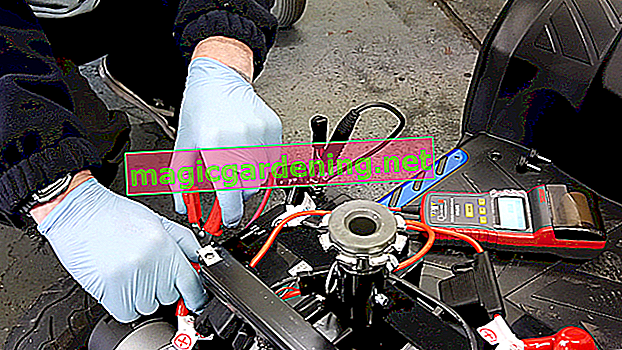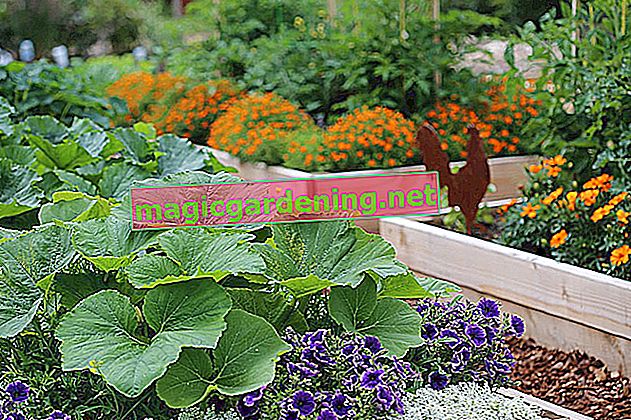
Build a herb bed yourself - the advantages
In order to keep your own small herb and medicinal garden, a simple cultivation outdoors does not always make sense. Especially if your garden does not have a suitable space for it or you only have a balcony. In that case, it makes sense to make a box bed out of wood yourself. Framing with subdivisions is also useful to segment herbs with different requirements. A raised bed also has special plant-related and handling advantages.
also read
- Creating a herb bed - hints, ideas and examples
- Kitchen garden within easy reach - the windowsill herb bed
- Create a herb bed - the best location
So what speaks for building a box herb bed yourself:
- Mobility - freer choice of location
- Possible segmentation of different herbs
- more influence on the substrate and easier management of the raised bed
The box bed in the open air
If you have a suitable place in the field for your herb bed, you can still structure it well with a wooden construction. It delimits the herb culture from the outside and can take into account the vegetative properties of the planned herbs with separate inner boxes. For example, varieties that spread and grow strongly, such as lemon balm or peppermint, can be kept in check.
In addition, the individual box segments can be filled with different soil mixes - for example, you can cultivate herbs that require nutrients such as parsley, lemon verbena or tarragon and varieties with a preference for poor soil such as thyme, rosemary or marjoram in a confined space.
Of course, you can leave such a functional box bed as a low, free-standing construction and not sink it into the open air. Then it is a bit more noticeable, but also mobile in case of doubt for location experiments or wintering.
The herb raised bed
With the free-standing box bed, we are no longer far from the raised bed - only that, according to its name, the raised bed is even higher and thus offers further advantages.
On the one hand, this results in a comfortable working height - in order to create even more comfort, you can attach side, circumferential bench surfaces to your wooden construction with cross supports or legs screwed at the bottom. For the care of the herb planting and the harvest, this can be very pleasant, especially for older people.
On the other hand, you can put together a deeper substrate in a raised bed construction - in this respect, a herbal raised bed is especially suitable for varieties that require nutrients such as chives, parsley, basil or lovage. With a herbal raised bed made of wood, you also give the plants a relatively temperature-resistant and breathable soil climate.
Build it yourself - pay attention to the size
For a box bed at ground level, you should not estimate more than 1.20 m in width and length. Otherwise access will be difficult. Boards about 40 cm high are suitable for the construction.
With a raised herb bed, you can of course go further with the edge length - provided that the depth still allows the herbs planted in the middle to be reached. The rule of thumb of a maximum of 1.20 m also applies here.








